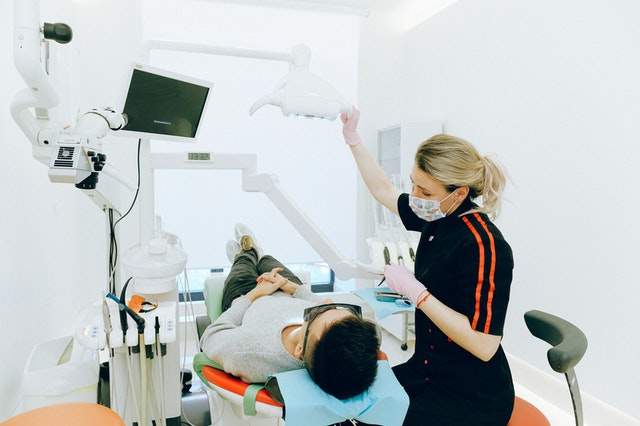 Photo by Anna Shvets from Pexels
Photo by Anna Shvets from Pexels
A lot of Americans are afraid of visiting the dentist. They worry about not just pain, but also the vulnerability that comes along with sitting in the dentist’s chair. The good news is that there are plenty of solutions that can help patients feel more comfortable and confident even if they struggle with serious dental phobias.
A Simple Solution
Sedation Dentistry provides a safe and simple solution to dental anxiety. There are several common types of sedation used to keep patients calm, but all of them can be administered right in the dentist’s office before the procedure.
Common Types of Dental Sedation
There are three common types of sedation used in dentistry. They are:
1. Nitrous Oxide
Nitrous oxide is administered as a gas. It’s often referred to colloquially as “laughing gas” because one of its side effects is inducing a state of euphoria. The good thing about nitrous oxide is that it wears off so quickly patients can often drive themselves home after their procedures.
2. Oral Sedatives
Oral sedatives like diazepam can help patients relax before their dental procedures. Patients take the medication an hour before the visit, and the effects are long-lasting enough to get them through the appointment fully awake but less anxious. Patients who use oral sedatives to overcome dental anxiety should always arrange a ride home since they may feel sleepy until the medication wears off.
3. Intravenous Sedatives
Intravenous (IV) sedatives can be used to place patients in varying states of consciousness. The most extreme form of IV sedation is general anesthesia, which is commonly used in invasive surgeries. However, most IV sedatives place patients in a state known as “twilight sleep,” in which they are sleepy and less aware of their surroundings, but still awake enough to comply with the dentist’s requests.
The Best Type of Dental Sedative
The best options vary based on the patient’s needs and the type of procedure being performed. While it may be tempting to assume that general anesthesia is the best type of dental sedative, that’s rarely the case. General anesthesia comes with more risks and side effects than conscious forms of sedation.
For short procedures, nitrous oxide is usually the best option. Patients who experience extreme anxiety may be better off using IV sedation or oral sedatives, but they should note that it may take some time for the effects to wear off and should plan accordingly.
Who Benefits From Dental Sedation?
Every dental patient has different needs, so not everyone can benefit from being sedated during their procedures. Dentists usually recommend the approach for patients who struggle with one of these problems:
Dental phobias
Traumatic prior experiences with dental work
Especially sensitive oral nerves
Small mouths that tend to become sore
Resistance to local anesthetics
General anxiety disorders
When in doubt about whether dental sedation is a good idea, schedule a consultation to discuss options with a local dentist. While most dentists don’t offer sedation for things like regular cleanings, X-rays, and routine care, a lot of offices use the options described above to help patients get through root canals, extractions, dental implant surgeries, and other more invasive procedures.
The Bottom Line
Dental sedation is a perfect option for patients who struggle with anxiety or severe pain during invasive procedures, but it’s not the right option for everyone. Only a licensed dentist can decide whether the benefits of sedation will outweigh the risks.






Speak Your Mind